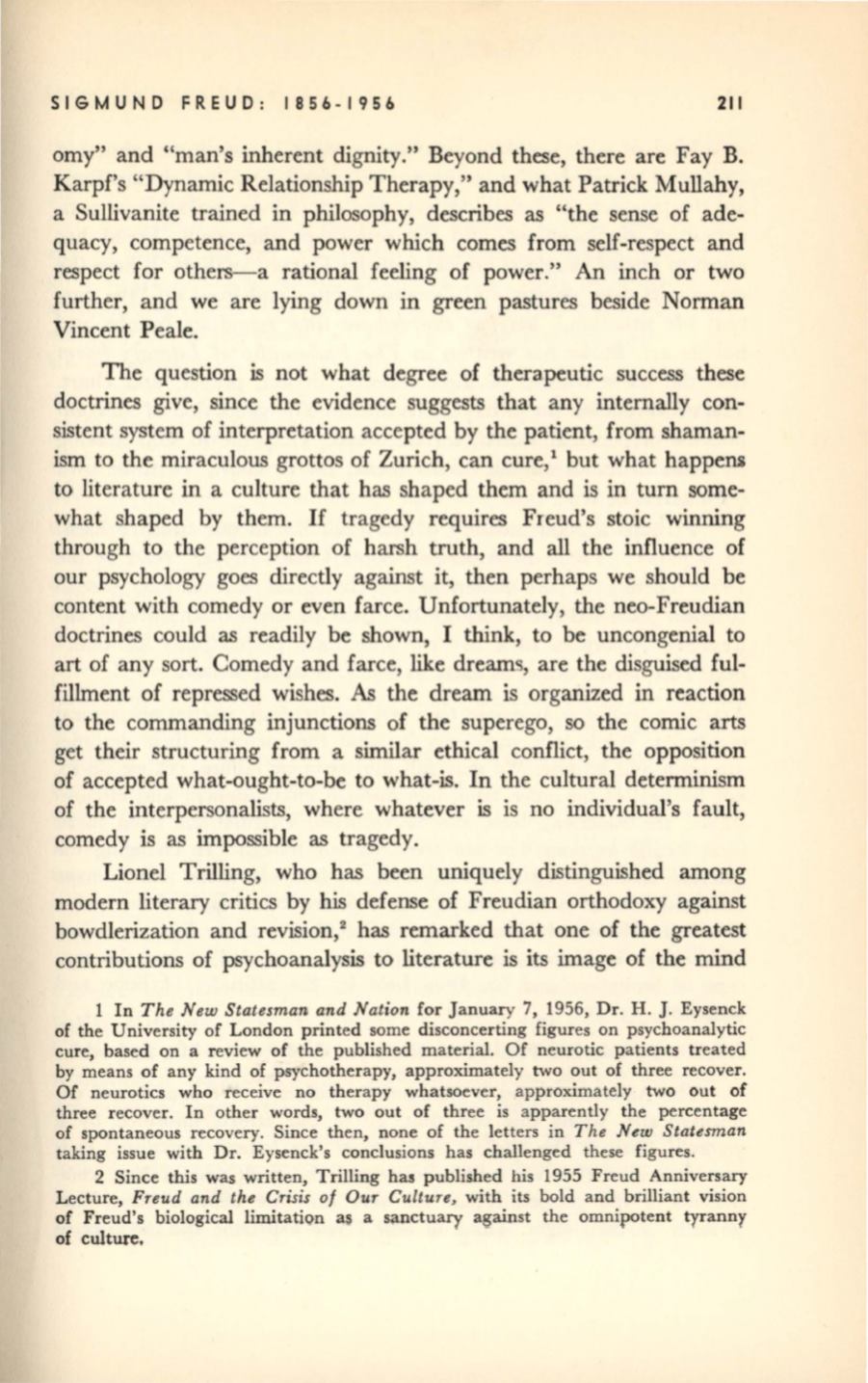
SIGMUND FREUD: 1856-1956
211
omy" and "man's inherent dignity." Beyond these, there are Fay B.
Karpf's "Dynamic Relationship Therapy," and what Patrick Mullahy,
a Sullivanite trained in philosophy, describes as "the sense of ade–
quacy, competence, and power which comes from self-respect and
respect for others-a rational feeling of power." An inch or two
further, and we are lying down in green pastures beside Norman
Vincent Peale.
The question is not what degree of therapeutic success these
doctrines give, since the evidence suggests that any internally con–
sistent system of interpretation accepted by the patient, from shaman–
ism to the miraculous grottos of Zurich, can cure,
1
but what happem
to literature in a culture that has shaped them and is in tum some–
what shaped by them.
If
tragedy requires Freud's stoic winning
through to the perception of harsh truth, and all the influence of
our psychology goes directly against it, then perhaps we should be
content with comedy or even farce. Unfortunately, the neo-Freudian
doctrines could as readily be shown, I think, to be uncongenial to
art of any sort. Comedy and farce, like dreams, are the disguised ful–
fillment of repressed wishes.
As
the dream is organized in reaction
to the commanding injunctions of the superego, so the comic arts
get their structuring from a similar ethical conflict, the opposition
of accepted what-ought-to-be to what-is. In the cultural determinism
of the interpersonalists, where whatever is is no individual's fault,
comedy is as impossible as tragedy.
Lionel Trilling, who has been uniquely distinguished among
modem literary critics by
his
defense of Freudian orthodoxy against
bowdlerization and revision,
2
has remarked that one of the greatest
contributions of psychoanalysis to literature is its image of the mind
1 In
The New Statesman and Nation
for January 7, 1956, Dr. H.
J.
Eysenck
of the University of London printed some disconcerting figures on psychoanalytic
cure, based on a review of the published material. Of neurotic patients treated
by means of any kind of psychotherapy, approximately two out of three recover.
Of neurotics who receive no therapy whatsoever, approximately two out of
three recover. In other words, two out of three is apparently the percentage
of spontaneous recovery. Since then, none of the letters in
The New Statesman
taking issue with Dr. Eysenck's conclusions has challenged these figures.
2 Since this was written, Trilling has published his 1955 Freud Anniversary
Lecture,
Freud and the Crisis of Our Culture,
with its bold and brilliant vision
of Freud's biological limitation as a sanctuary against tile omnipotent tyranny
of culture.


